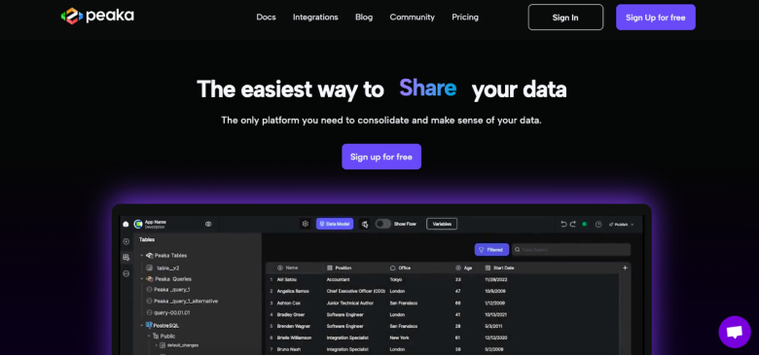How to Master SaaS Business Metrics
Introduction
Software-as-a-Service (SaaS) businesses have become the order of the day in today’s digital age.
From cloud-based software to automated customer management systems, SaaS companies are changing the game by offering different services.
Nevertheless, in order to succeed within this environment of fierce competition, it is significant for firms to excel in SaaS business metrics.
So, in this article, we’ll be explaining what SaaS business metrics are, introducing the essential KPIs every B2B SaaS startup should track, and discussing how these metrics can assist your company in growing and becoming profitable.
What are SaaS metrics?
SaaS business metrics are performance indicators that assist SaaS companies in evaluating their operations, revealing the strengths and weaknesses of promoting data-driven decisions. These metrics are the industry’s lifeblood, providing insights into a SaaS company’s viability and prospects for growth.
By mastering these metrics, SaaS businesses can streamline their operations, reduce churn rates, and boost profitability.
These metrics are the basic units of analysis applicable to strategic decision-making—they point in a direction toward success and give an overview of the firm’s well-being, possible development, and long-term profitability.
So, in this journey to disentangle this complexity, we will first demystify SaaS business metrics.
Once we know what these metrics are, we will explain the benefits each can bring to decision-makers.
What are the 8 SaaS metrics you should be tracking?

To get a real sense of the reasons behind SaaS success, we must dive deep into the essential SaaS business metrics that inform successful strategies.
SaaS business metrics guide your customer acquisition strategies, profitability, and other critical decisions in your SaaS business.
1. Customer Acquisition Cost (CAC)
The first beacon on our metric map is Customer Acquisition Cost (CAC), which reflects what it has taken, in terms of expenditure, to bring a new customer on board.
This includes the cost of acquisition per customer encompassing marketing activities, expenses incurred by the sales team, and overheads.
Calculating CAC can provide important information about the effectiveness of your customer acquisition initiatives.
A low CAC reflects cost-effective strategies, which increases profitability.
2. Monthly Recurring Revenue (MRR)
The lifeblood of any SaaS enterprise is its Monthly Recurring Revenue (MRR). It indicates reliable, recurring revenue derived from subscription-based services.
A healthy MRR figure creates a very important financial foundation that supports the budgeting, plan-making, and scaling of investments.
It is through close monitoring of MRR that you continue to earn an income stream that sustains your business in good and challenging times.
3. Churn rate
The best analogy for describing the churn rate is a "leaky bucket." This metric shows the number of clients who have determined to jump out of a product or service by terminating their subscriptions.
High churn rates can sink your revenue and profitability.
Therefore, understanding churn, determining its underlying causes, and taking measures to reduce it are very important for avoiding problems.
4. Customer Lifetime Value (CLV)
How much value you can extract from a customer plays a big part in determining your future earnings potential. Customer Lifetime Value (CLV) is the metric you should use to measure the future value a customer will create for your business during the full span of interaction.
This metric allows you to determine how much you need to invest in customer acquisition and retention.
The higher your CLV, the better your chances of achieving lasting profitability.
5. Gross Monthly Recurring Revenue (GMRR)
Gross Monthly Recurring Revenue (GMRR) comprises MRR and Churn and denotes the incremental change in revenue, taking into account the revenue lost from churns and gained through upsells and cross-sells.
A high GMRR indicates that you have not only preserved your existing customer base but also expanded it, achieving lasting revenue growth.
6. Expansion Monthly Recurring Revenue (EMRR)
Expansion Monthly Recurring Revenue (EMRR) captures revenue derived from existing clients upgrading, getting more features, or moving to bigger subscriptions.
Strong EMRR indicates a vibrant, interested customer cohort with a propensity toward checking out your complete line of offerings.
The revenue growth rate from existing customers is a good indicator of the growth potential in the current customer segment you are serving.
7. Net Promoter Score (NPS)
Customer satisfaction and Net Promoter Score (NPS) help you gauge your reputation. They measure how well your product or service has been received by your customer base.
This metric matters because satisfied customers will stay with you longer, refer other people, and support the growth of your SaaS business.
These metrics used in SaaS business give you visibility into your brand’s growth potential and the viability of its business model.
8. Customer Acquisition Rate (CAR)
Customer Acquisition Rate (CAR) serves as a speedometer for your company’s growth. It quantifies how fast you acquire new customers.
One of the crucial factors determining the profitability of SaaS businesses is how quickly a new customer can be acquired.
With CAR, you gain the insights needed to inform your growth strategy.
If you are wondering how you can measure these metrics, don't worry! With Peaka's no-code data integration, you can easily bring your data together, calculate the relevant SaaS metrics, and get all the information you need for tracking your company's growth!

Conclusion
Mastering SaaS business metrics is not all about collecting data but rather making sense of it. That's why you should use a SaaS analytics tool. Keeping this in mind and focusing on the analysis of the data gathered helps lead you to growth and profitability.
The metrics you should focus on depend on your business model and objectives, but the basics stay the same.
The ability to measure and analyze these metrics can make all the difference in success or failure, whether you’re B2B or B2C SaaS.
Keep an eye on the pulse of SaaS business metrics such as CAC, MRR, churn rate, CLV, GMRR, EMRR, NPS CAR, and other key performance indicators to refine your strategies and make accurate decisions for the future of your SaaS startup.
In the fast-paced world of SaaS, it’s all about understanding, adjusting to, and mastering these business metrics that will push your company toward sustainability in growth and profitability.




 Please
fill out this field
Please
fill out this field









